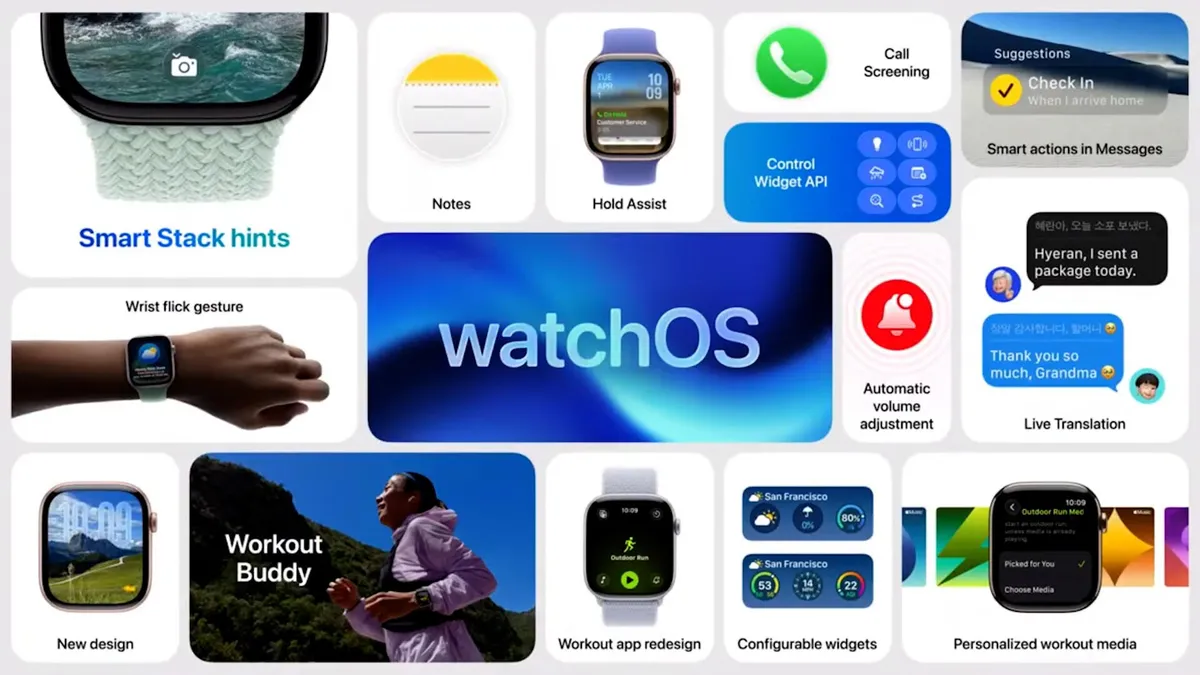
Wafricnews - June 10, 2025
Apple has finally laid out its vision for artificial intelligence, with updates touching nearly every corner of its product line — from smarter messaging to live translations and a major redesign of iOS. But while the tech giant’s announcements at this year’s Worldwide Developers Conference (WWDC) were polished, many observers say Apple is still playing catch-up in the global AI race.
Apple has finally laid out its vision for artificial intelligence, with updates touching nearly every corner of its product line — from smarter messaging to live translations and a major redesign of iOS. But while the tech giant’s announcements at this year’s Worldwide Developers Conference (WWDC) were polished, many observers say Apple is still playing catch-up in the global AI race.
At its flagship keynote on Monday, Apple unveiled a wave of software enhancements under the banner of Apple Intelligence — its homegrown AI platform — which will power features across iPhones, Macs, iPads, and Apple Watches. But despite the fanfare, none of the updates truly shifted the landscape, especially in a year when competitors like Google, OpenAI, and Samsung have taken bolder steps.
Still, for Apple’s vast base of over 2 billion devices worldwide, the new AI features mark a calculated, if cautious, pivot toward smarter user experiences.
Live Translation, Smarter Messaging — But Familiar Territory
One of the most headline-grabbing announcements was Apple’s new live translation feature, allowing users to translate voice and video calls across languages in real time — even while wearing AirPods. The feature spans iPhone, iPad, Mac, and Apple Watch, and puts Apple in more direct competition with tools from Google Pixel, Samsung Galaxy, and Meta’s smart glasses.
Apple also introduced enhanced call screening that uses AI to block spam and scams before a user even picks up. In Messages, users can now enjoy colorful chat backgrounds, polls, and smarter text sorting to separate real messages from fraud — improvements reminiscent of features long present in WhatsApp and Android.
Apple Intelligence: Smarter, but Not Groundbreaking
Apple Intelligence brings modest but meaningful improvements. A new "Workout Buddy" on Apple Watch will analyze fitness data to offer personalized coaching. Visual search will allow users to tap on images — like fashion items or plants — and receive instant info from the web.
Perhaps the most significant development? Apple is opening its AI system to third-party apps, meaning services like AllTrails, Spotify, or Kahoot can now integrate Apple’s on-device AI. This could create a more intelligent, consistent app experience across Apple’s ecosystem.
Still missing in action is a fully rebuilt Siri, Apple’s voice assistant once considered a pioneer but now lagging behind rivals like ChatGPT, Google Assistant, and Amazon’s Alexa. Apple executives acknowledged that a reimagined Siri is still in development — a silence that disappointed many observers.
“No amount of emoji tweaks can fill the void left by the lack of an intuitive, interactive Siri,” noted Dipanjan Chatterjee, Vice President at Forrester Research.
A Big Visual Overhaul with ‘Liquid Glass’ Design
Apple also introduced iOS 26, the company’s most visually significant redesign since 2013. Inspired by its Vision Pro mixed reality headset, the new interface features "Liquid Glass" — translucent, glossy visuals that reflect a more futuristic design language across all Apple platforms.
For the first time, Apple is unifying version names across all devices — iPhones, iPads, Macs, Watches — using the calendar year (iOS 26, macOS 26, etc.). It’s a subtle but strategic move to simplify the ecosystem for users and developers alike.
Mac and iPad Finally Get Work Done
Two big wins came for productivity:
- Mac's Spotlight search now doubles as an intelligent assistant that can take actions across apps — like sending messages or creating events — without leaving your current screen.
- iPad multitasking just got better, with more intuitive window resizing and persistent layouts, helping the iPad edge closer to being a real laptop alternative.
Apple’s Balancing Act: Innovation vs. Ecosystem
Apple’s approach this year was deliberately conservative. Rather than launching flashy new devices or revolutionary software, the company focused on enhancing its existing tools in subtle, intelligent ways.
With slowing iPhone sales, growing regulatory pressure, and AI momentum shifting to rivals, Apple needed to show progress without overpromising. In that sense, the WWDC announcements were measured, ecosystem-first, and centered around keeping current users engaged.
“Apple is quietly building bridges — not just between devices, but between expectations and execution,” said Paolo Pescatore of PP Foresight.
What It Means for the Global South
While many of Apple’s AI features mirror what Android has long offered, their integration into Apple’s tightly controlled hardware-software ecosystem could prove powerful. In markets like Africa and Southeast Asia — where Apple’s high costs limit its reach — the real impact will depend on whether these innovations can trickle down through more affordable devices or service bundles.
For now, Apple is still playing catch-up — but with billions of devices already in users’ hands, it might not need to lead the AI race to win it.
By Wafricnews Desk.
By Wafricnews Desk.


Comment
To post a comment, you have to login first
LoginNo Comments Yet...